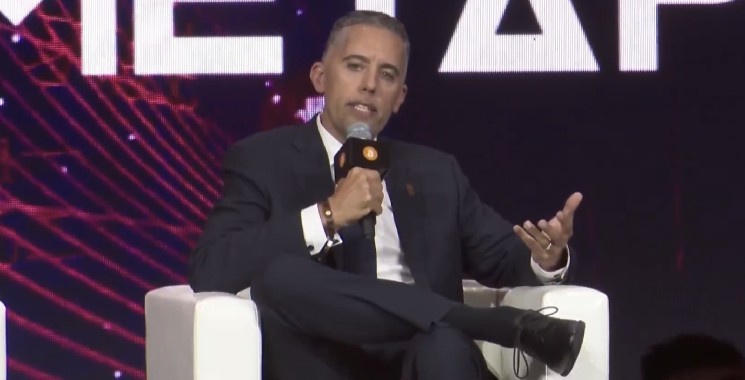Bitcoin Treasury Companies Face Critical Performance Test in Growing Crypto Market
The Alpha Challenge: Can Bitcoin Treasury Strategies Outperform BTC Itself?
In the rapidly evolving landscape of cryptocurrency investments, Bitcoin treasury companies are confronting a fundamental challenge that could determine their long-term viability: demonstrating they can outperform Bitcoin itself. Without this crucial ability to generate excess returns, investors might be better served purchasing Bitcoin directly through increasingly accessible vehicles like spot ETFs.
“If you aren’t doing that, there’s no reason to do the strategies, just buy a Bitcoin ETF,” asserted Matt Cole, CEO of Strive Asset Management, during a recent panel discussion at BTC Asia in Hong Kong. Cole, who gained prominence as a vocal advocate for GameStop adding Bitcoin to its balance sheet, framed the issue as a straightforward search for alpha—finding ways to outperform BTC without merely accumulating Bitcoin-specific risk. His strategic approach focuses on sophisticated financing mechanisms, highlighting a transition from convertible securities to perpetual preferred equity instruments that effectively lock in leverage advantages over time.
The path to success for these treasury companies, however, appears strewn with significant hurdles. Cole emphasized that reaching the critical $1 billion capital threshold represents the most formidable obstacle for Bitcoin treasury operations. This milestone is pivotal because it enables access to substantially cheaper financing options that can support public offerings and expanded operational teams. “The hardest thing to do for bitcoin treasury companies is getting to a billion dollars,” Cole noted, referencing MicroStrategy’s Michael Saylor, whose company has become the archetype for corporate Bitcoin treasury strategies.
Bitcoin’s Unique Position as Treasury Asset
Bitcoin’s fundamental monetary properties set it apart as uniquely suited for corporate treasury strategies, according to industry experts. Cole delivered a pointed assessment of alternative cryptocurrencies in this context, particularly dismissing Ethereum as inappropriate for treasury operations. “Ethereum makes for a horrible asset for a treasury company,” he stated unequivocally, explaining that its monetary policy fluctuations create unsuitable characteristics for long-term treasury holdings.
The underlying rationale stems from Bitcoin’s fixed supply mechanism—a stark contrast to traditional fiat currencies and many alternative cryptocurrencies. “Bitcoin perpetually goes up versus fiat currencies because they’re being debased,” Cole explained, highlighting how this inherent property creates a compelling foundation for leveraged treasury strategies designed to compound value over extended timeframes. This perspective underscores a fundamental belief among Bitcoin treasury advocates: that BTC’s scarcity and immutable monetary policy provide unique advantages impossible to replicate with other assets.
While aggressive strategies attract attention, alternative approaches emphasize transparency and risk management alongside performance metrics. Andrew Webley of The Smarter Web Company, a publicly listed U.K. web design firm that maintains Bitcoin reserves, presented a more measured perspective regarding market NAV considerations, Bitcoin yield potential versus dilution concerns, and appropriate scaling based on company size. Webley suggested smaller firms might actually possess certain advantages in capital formation but stressed that transparent communication remains equally crucial as financial engineering.
“The most important thing that you can do as a public company, in my opinion, is to publish our rules first,” Webley explained, emphasizing that clear disclosure empowers investors to fully comprehend the inherent trade-offs associated with Bitcoin treasury models. This commitment to transparency serves a dual purpose—establishing trust with investors while also highlighting investment opportunities. “If somebody can understand the risks, then in our opinion these things are the very best value opportunities in the whole world,” he added, suggesting properly structured and communicated Bitcoin treasury strategies may represent unparalleled investment propositions.
Market Dynamics: Bitcoin Resilience Amid Broader Economic Shifts
Bitcoin continues to demonstrate remarkable market resilience, trading above $110,500 despite experiencing a minor pullback in recent sessions. Market analysts point to persistent accumulation patterns and robust demand near critical support levels as evidence that market participants maintain bullish sentiment regarding Bitcoin’s next potential breakout. These technical indicators, combined with broader macroeconomic factors including inflation concerns and monetary policy expectations, continue to support Bitcoin’s strong performance in 2024.
The broader cryptocurrency market shows divergent performance patterns, with Ethereum trading around $4,300, representing a modest 0.6% decline. Despite this short-term fluctuation, ETH continues benefiting from substantial institutional interest and consistent ETF inflows, factors that analysts suggest provide structural support for longer-term appreciation potential. This institutional engagement marks a significant evolution in the cryptocurrency ecosystem, demonstrating growing mainstream financial acceptance of digital assets beyond Bitcoin.
Traditional financial markets exhibit parallel patterns of strength and volatility. Gold continues trading near historic highs, supported by rate-cut expectations and increasing safe-haven demand, though recent sessions have seen minor retracements attributed to profit-taking behaviors. In equity markets, Japan’s Nikkei 225 maintains its impressive rally, fueled by strong foreign investment flows driven by the country’s pivot away from long-term stimulus policies, corporate governance reforms, and rising yields. Meanwhile, the S&P 500 achieved another record, climbing 0.83% to 6,502.08 as investors largely dismissed weaker-than-expected private sector employment data while awaiting more comprehensive labor market indicators that could provide clearer signals regarding Federal Reserve policy direction and recession risks.
The Investment Dilemma: Strategic Aggression vs. Transparent Growth
The contrasting approaches presented by industry leaders underscore the fundamental choice confronting investors interested in Bitcoin treasury companies: allocate capital to firms pursuing aggressive financial engineering strategies aimed at significantly outperforming Bitcoin itself, or favor companies promising more moderate but potentially sustainable growth supported by transparent operational practices. This dichotomy reflects broader philosophical differences regarding risk management, disclosure standards, and performance expectations within the evolving Bitcoin treasury sector.
Companies pursuing aggressive strategies typically emphasize sophisticated financing arrangements, often employing significant leverage to amplify Bitcoin’s appreciation potential. These operations frequently attract investors seeking maximum exposure to Bitcoin’s upside while potentially benefiting from corporate structure advantages. Conversely, firms prioritizing transparency focus on clear communication of both opportunities and risks, establishing predetermined operational parameters that provide investors with comprehensive understanding of business models and decision-making frameworks.
Despite these methodological differences, panel participants reached consensus on a crucial point: Bitcoin’s role as a treasury asset continues expanding as traditional fiat currencies face persistent debasement concerns. This fundamental macroeconomic backdrop provides ongoing impetus for corporate treasury diversification into Bitcoin, suggesting the trend toward corporate Bitcoin adoption remains in its early stages despite significant progress in recent years. As regulatory frameworks evolve and institutional understanding of cryptocurrency improves, this corporate adoption curve may accelerate further, potentially creating additional opportunities for investors in the Bitcoin treasury company sector.
Broader Cryptocurrency Ecosystem Developments
The cryptocurrency landscape continues evolving beyond treasury strategies, with significant developments across multiple sectors. World Liberty Financial recently implemented dramatic security measures by blacklisting Justin Sun’s address containing approximately $107 million in WLFI tokens, highlighting ongoing tensions between decentralization principles and practical security considerations. This action represents one example of the complex governance challenges facing decentralized finance projects as they balance operational security with philosophical commitments.
In regulatory developments, observers note increasingly constructive engagement from U.S. authorities, with the Securities and Exchange Commission reportedly advancing several digital asset rulemakings that industry participants characterize as potentially supportive of responsible cryptocurrency innovation. This evolving regulatory approach, if substantiated, could represent a significant shift in the relationship between government agencies and cryptocurrency businesses after years of primarily enforcement-focused interaction.
Meanwhile, the intersection between cryptocurrency technology and traditional markets continues expanding, with decentralized prediction platform Polymarket attracting approximately $600,000 in wagers on the NFL season opener. This activity represents part of the platform’s strategic targeting of the estimated $107 billion sports betting industry, demonstrating how blockchain-based alternatives increasingly compete with established industries. As these cross-sector applications proliferate and corporate Bitcoin adoption strategies mature, the cryptocurrency ecosystem continues its remarkable transition from speculative novelty to integral component of modern financial infrastructure—a transformation that Bitcoin treasury companies hope to leverage for sustainable competitive advantage.














